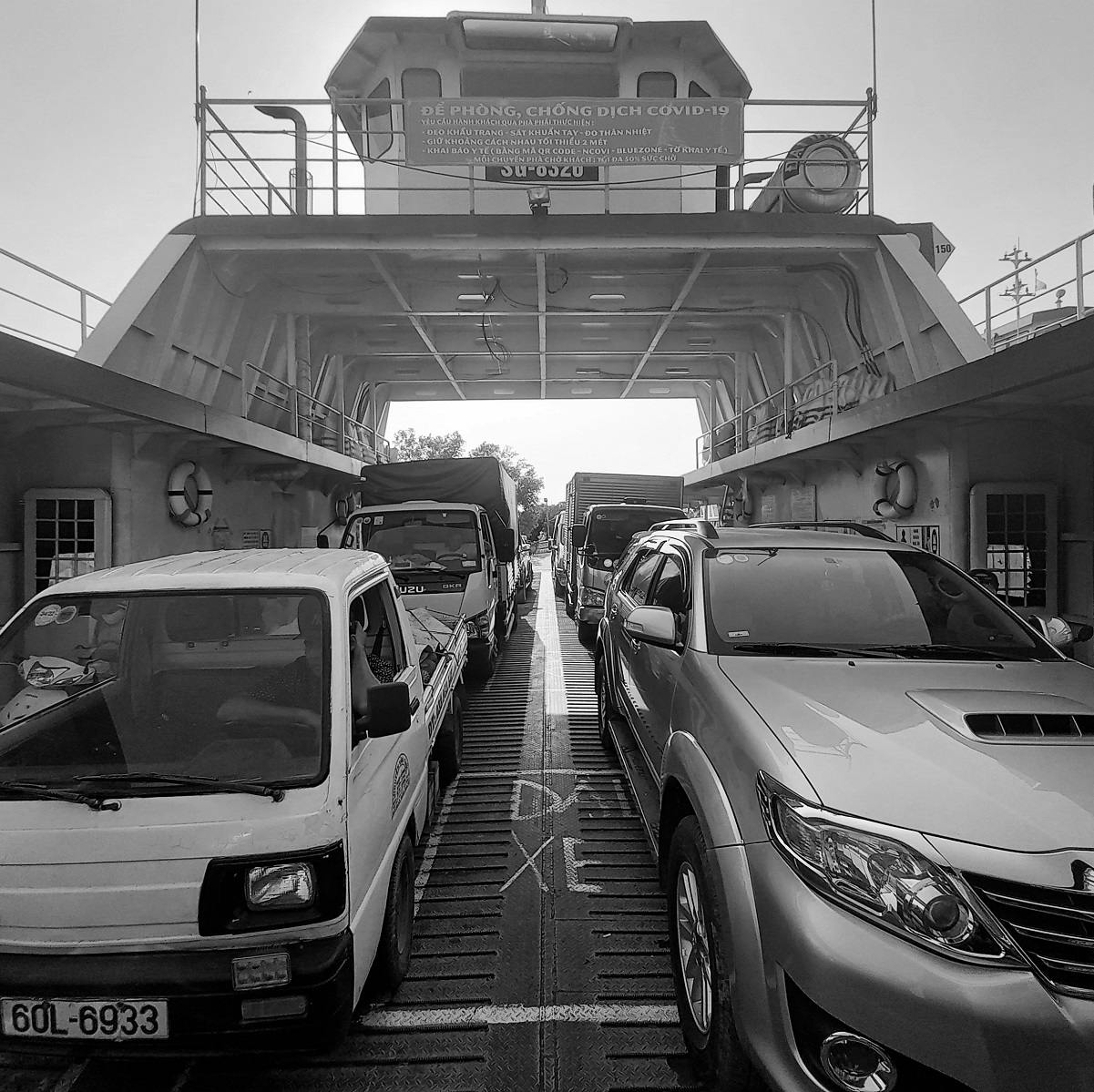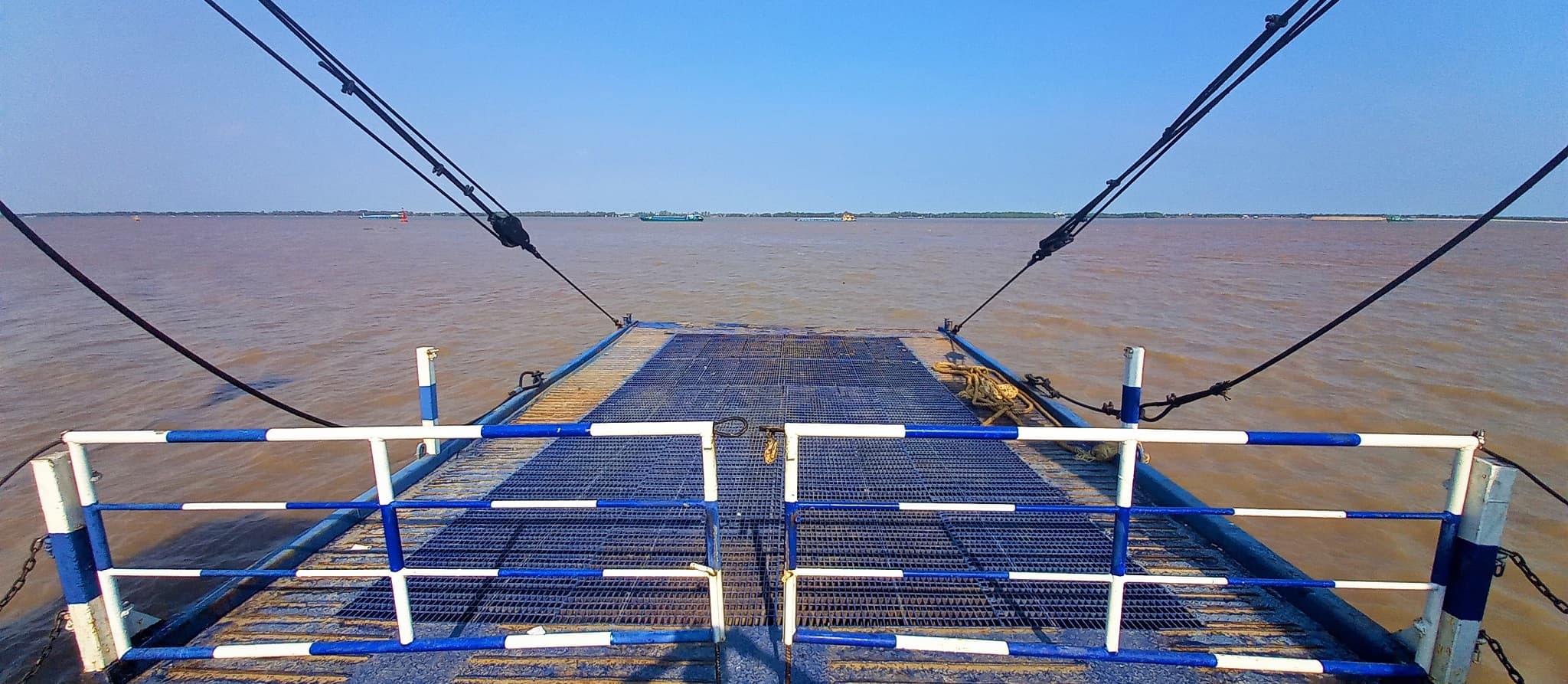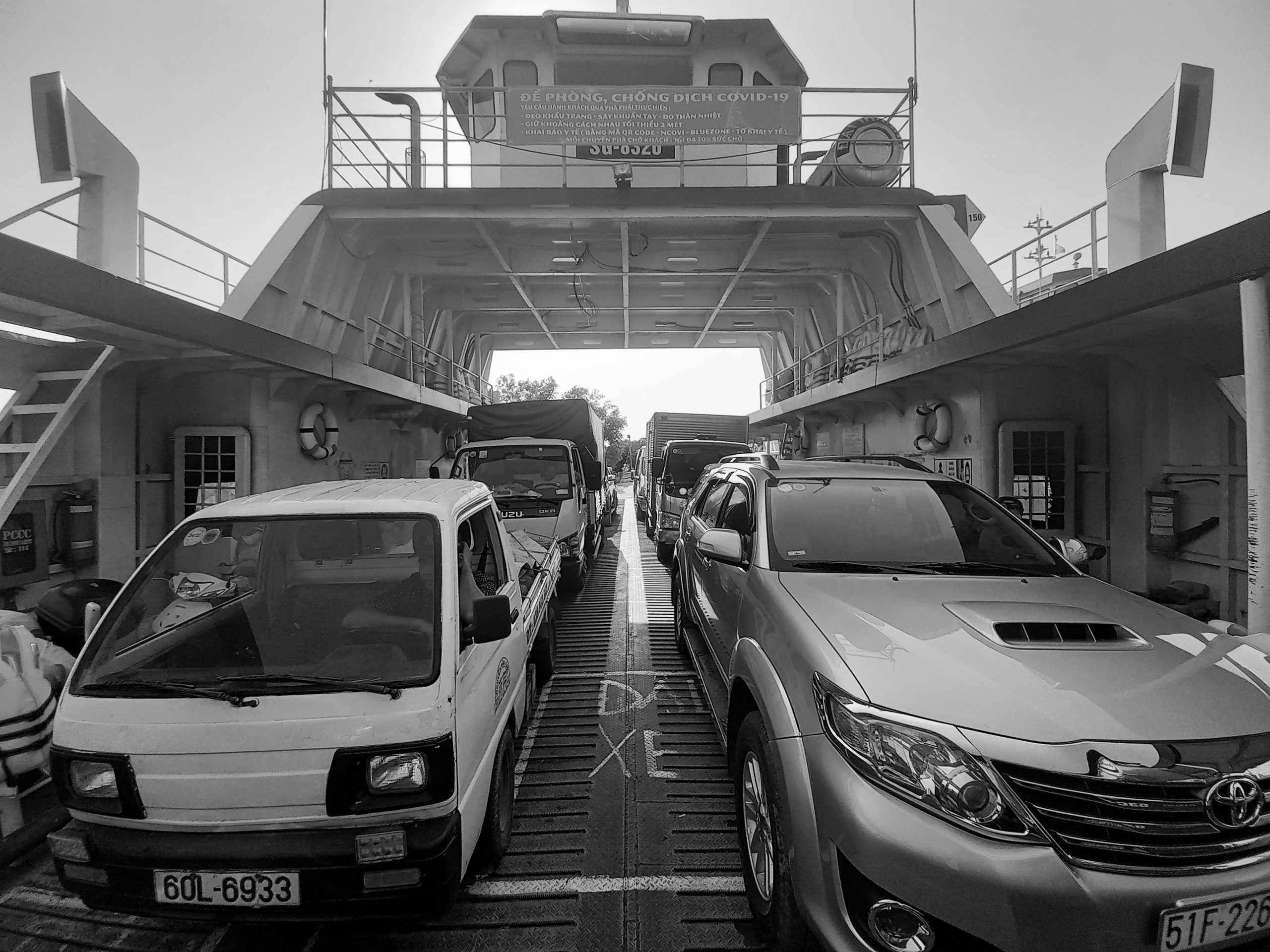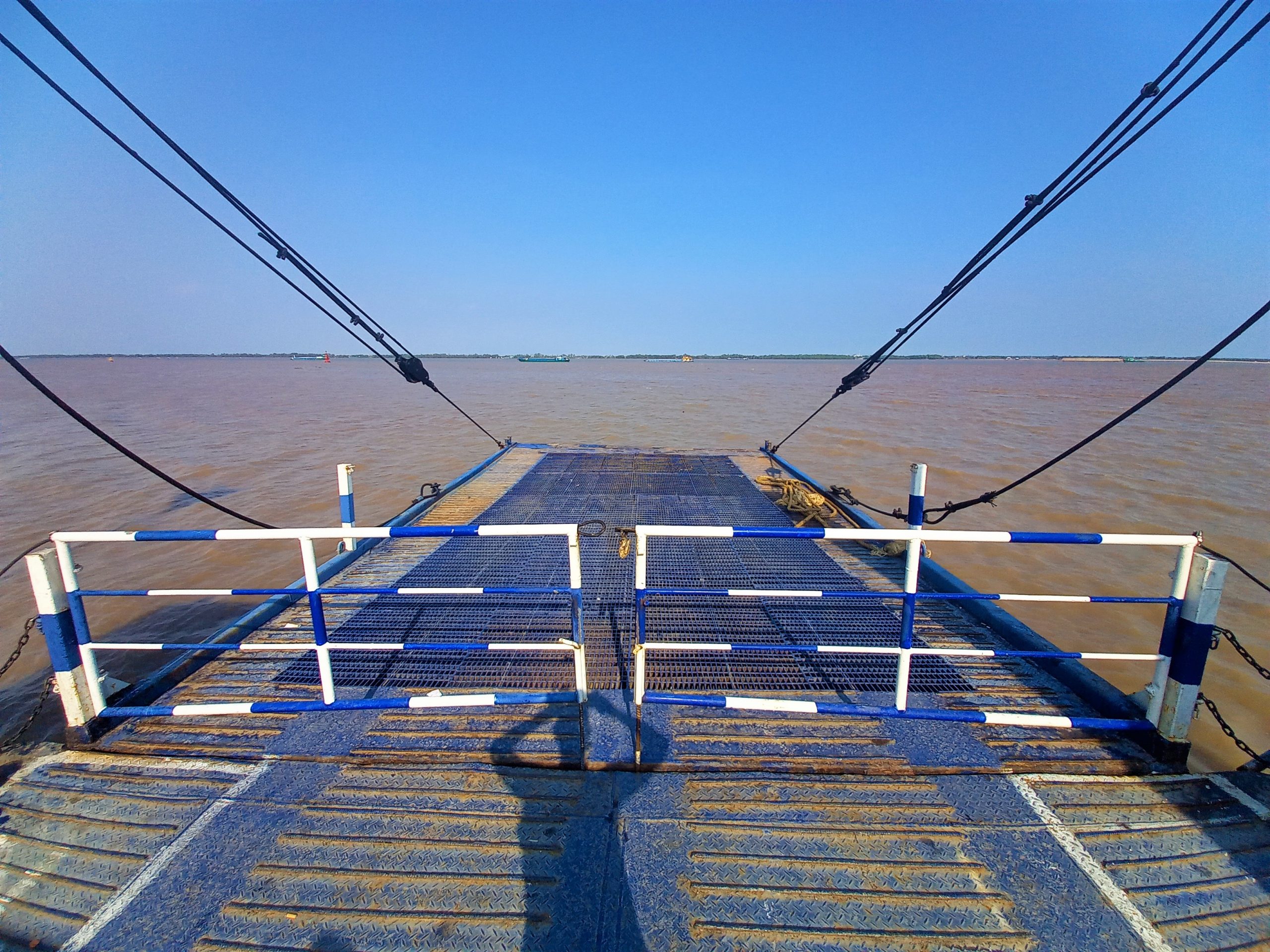First published February 2022 | Words and photos by Vietnam Coracle
This post was last updated 3 years ago. Please check the comments section for possible updates, or read more on my Updates & Accuracy page.
INTRODUCTION | GUIDE | MAP | RELATED POSTS
This ferry crossing enables motorbikers, cyclists or motorists to travel from the southeast coast to the Mekong Delta and bypass Saigon (Ho Chi Minh City) completely. By using the Cần Giờ→Cần Giuộc ferry combined with the Cần Giờ→Vũng Tàu ferry, riders can cut out the long, busy, polluted and unpleasant journey through Saigon and its industrial suburbs. Connecting Long An Province in the Delta with Cần Giờ (a rural district of Ho Chi Minh City municipality), this ferry is a great boon for any riders who (like me) want to avoid horrible roads at all costs. Thanks to the Cần Giờ→Cần Giuộc ferry and the Cần Giờ→Vũng Tàu ferry, there is now absolutely no need to ride through Saigon if you want to travel between Vũng Tàu and the Mekong Delta with your own wheels.
[Back Top]

GUIDE: CAN GIO→CAN GIUOC FERRY
This ferry can be used in either direction: to connect the southeast coast with the Mekong Delta or vice versa. In both directions, this ferry needs to be combined with the Cần Giờ→Vũng Tàu ferry. Below is a complete guide, including a route map, sailing schedule, ticket prices, information about departure and arrival ports, a description of the boats and the voyage, and a general overview of the ferry route and why travellers might use it. Click from the contents below to read more:
*Please Support My Site: I never receive payment for anything I write: all my content is free to read and independently financed. There’s no sponsored content whatsoever. If you like this guide, please consider making a donation or becoming a patron. Thank you, Tom
ROUTE MAP:
Mekong Delta to Vũng Tàu via the Cần Giờ→Cần Giuộc Ferry
View LARGER MAP
About this Ferry:
The main reason to use Cần Giờ→Cần Giuộc ferry is to connect the southeast coast to the Mekong Delta without having to go through Saigon (Ho Chi Minh City). By using this ferry, travellers on two wheels (motorbike or bicycle) can ride between Vũng Tàu (on the southeast coast) and Long An Province (in the Mekong Delta) bypassing Saigon completely, thus cutting out the horrible, congested and polluted roads through the industrial suburbs and the city itself. This ferry, combined with the Cần Giờ→Vũng Tàu ferry, cuts the corner of an otherwise long and unpleasant ride.
For example, if you want to ride from Mỹ Tho in the Mekong Delta to Vũng Tàu on the southeast coast, instead of having to ride all the way north to Saigon and then south to the coast, riders can go almost directly from west to east between the two points by using this ferry crossing and then connecting with the Cần Giờ→Vũng Tau ferry. It’s a great option for riders who want to avoid Saigon and the industrial suburbs at all costs.

Times & Prices:
The ferry schedule is simple: From dawn (5am) to dusk (6pm) there’s one crossing every hour in each direction:
Cần Giờ → Cần Giuộc on the half hour: 5.30, 6.30, 7.30 etc.
Cần Giuộc → Cần Giờ on the hour: 5.00, 6.00, 7.00 etc.
*On weekends and public holidays there are several more crossings.
Duration & Capacity:
The ferry has room for about a dozen cars and several dozen motorbikes, as well as foot passengers. The crossing is wide and the current strong, making it quite a slow (but pleasant) voyage: about 15 minutes from one bank to the other.
Tickets & Prices:
Tickets are purchased on arrival as you enter the ferry station: 22,000vnd/motorbike & rider
Ferry Stations:
Cần Giờ and Cần Giuộc ferry stations are on the east and west bank of the Soài Rạp River respectively. Both are small, sleepy piers:
Cần Giờ Ferry Station [MAP]:
Rural and quiet, Cần Giờ ferry station is accessed by a slip road and surrounded by fields. There’s a ticket kiosk and snack shop, but nothing else. Technically, this is Ho Chi Minh City, but it feels like a remote corner of the Mekong Delta. From the river, you can’t even make out the ferry station through the nypa palms that grow along the banks.
Cần Giuộc Ferry Station [MAP]:
Accessed via a wide, empty new road and in the shadow of the brand new Long An International Port, Cần Giuộc ferry station is a small concrete platform with a waiting area and pleasant snack shop. The entrance is through an incongruously large, freestanding portico.
The Boats:
The ferries are of the classic Mekong-River-crossing variety: with ramps at both ends, they are functional, drive-on-drive-off vessels. Although by no means attractive, there’s a certain nobility and grace in the way these ferries plough across the current of the muddy waters, day after day, bearing many tons of cargo, without any ceremony or style. They’re old, tough, uncomplaining workhorses. However, because this is a relatively remote and seldom-used crossing, the ferries are smaller and have less capacity for large vehicles compared to those in busier, more urban parts of the region. For me, as for many travellers, no matter the vessel, there’s always something magical about being on a boat.

The Voyage:
A wide and muddy crossing, the two banks the ferry connects are very different in character. On the west bank (Long An Province), the river is lined with industry and commercial ports and factories – the busy, industrious, urban Mekong Delta; one of the nation’s powerhouses. But on the east bank, the river is thick with nypa palms, behind which lie swamps and fields fringed by the massive expanse of towering mangroves that characterize the Cần Giờ District of Ho Chi Minh City municipality. The ferry drifts noiselessly, slowly but inexorably towards its destination. The exposure out on the river and the movement of the ferry create a cooling breeze on deck. After a 15 minute hiatus during the crossing, as the ferry approaches land, all the engines sputter to life before everyone disembarks.
*Disclosure: I never receive payment for anything I write: my content is always free and independent. I’ve written this guide because I want to: I like this ferry and I want my readers to know about it. For more details, see my Disclosure & Disclaimer statements and my About Page
[Back Top]

















